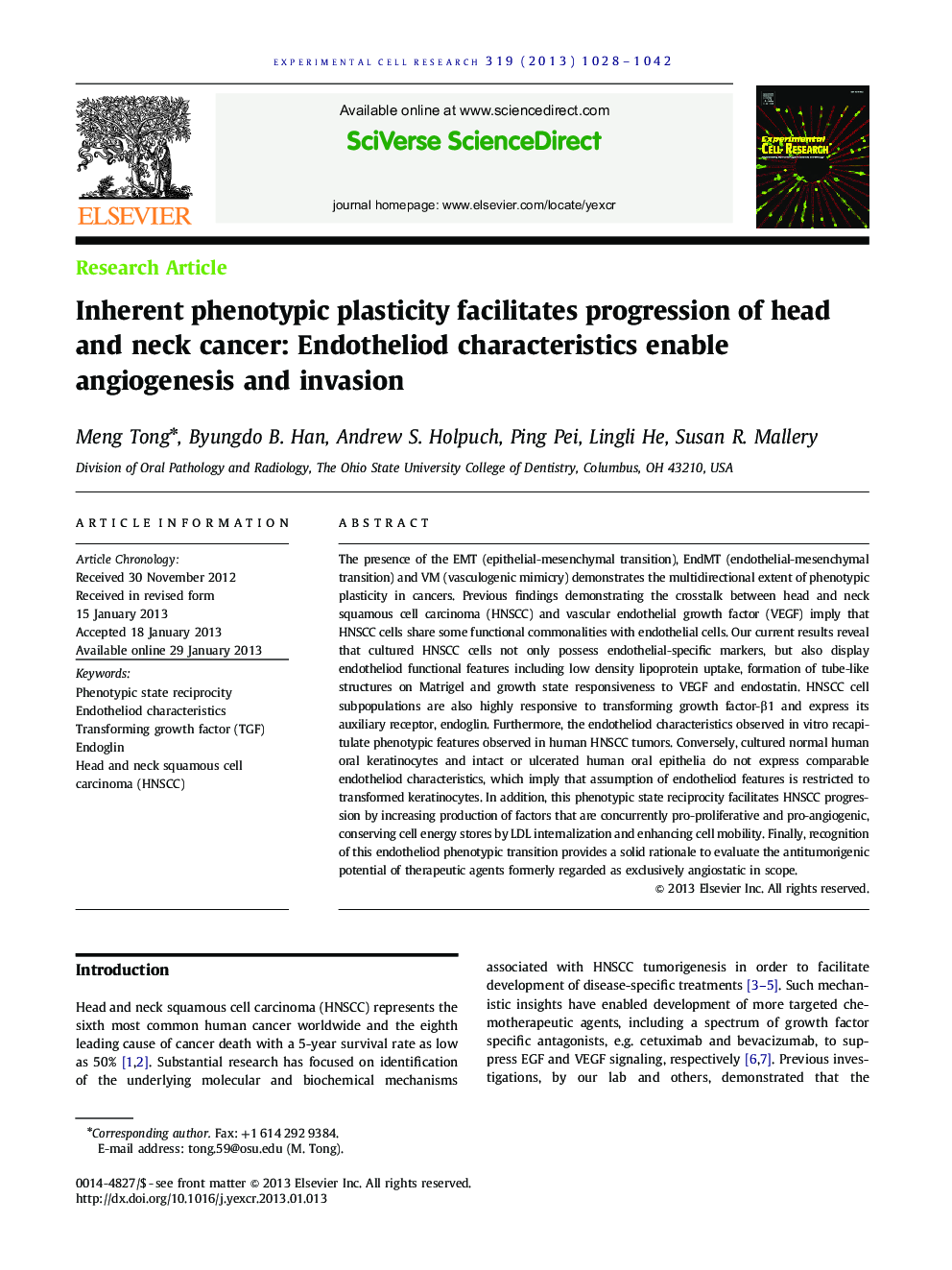| کد مقاله | کد نشریه | سال انتشار | مقاله انگلیسی | نسخه تمام متن |
|---|---|---|---|---|
| 2130501 | 1086577 | 2013 | 15 صفحه PDF | دانلود رایگان |

The presence of the EMT (epithelial-mesenchymal transition), EndMT (endothelial-mesenchymal transition) and VM (vasculogenic mimicry) demonstrates the multidirectional extent of phenotypic plasticity in cancers. Previous findings demonstrating the crosstalk between head and neck squamous cell carcinoma (HNSCC) and vascular endothelial growth factor (VEGF) imply that HNSCC cells share some functional commonalities with endothelial cells. Our current results reveal that cultured HNSCC cells not only possess endothelial-specific markers, but also display endotheliod functional features including low density lipoprotein uptake, formation of tube-like structures on Matrigel and growth state responsiveness to VEGF and endostatin. HNSCC cell subpopulations are also highly responsive to transforming growth factor-β1 and express its auxiliary receptor, endoglin. Furthermore, the endotheliod characteristics observed in vitro recapitulate phenotypic features observed in human HNSCC tumors. Conversely, cultured normal human oral keratinocytes and intact or ulcerated human oral epithelia do not express comparable endotheliod characteristics, which imply that assumption of endotheliod features is restricted to transformed keratinocytes. In addition, this phenotypic state reciprocity facilitates HNSCC progression by increasing production of factors that are concurrently pro-proliferative and pro-angiogenic, conserving cell energy stores by LDL internalization and enhancing cell mobility. Finally, recognition of this endotheliod phenotypic transition provides a solid rationale to evaluate the antitumorigenic potential of therapeutic agents formerly regarded as exclusively angiostatic in scope.
Figure optionsDownload high-quality image (331 K)
Journal: Experimental Cell Research - Volume 319, Issue 7, 15 April 2013, Pages 1028–1042